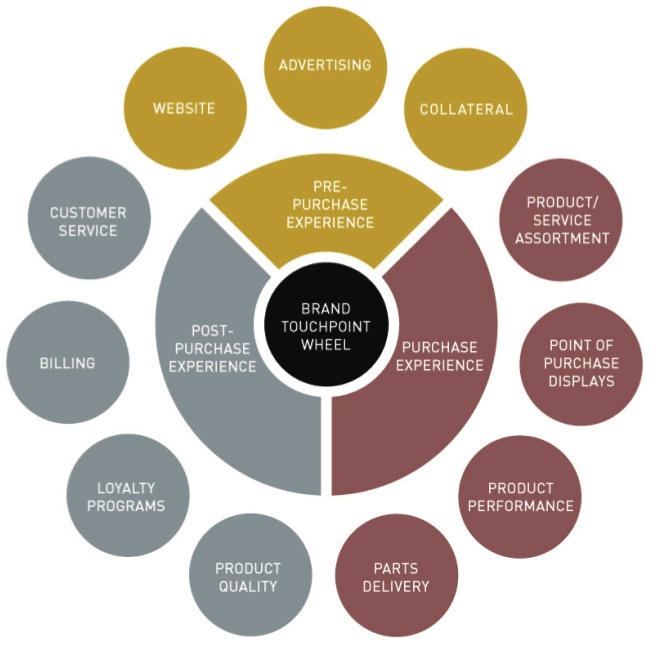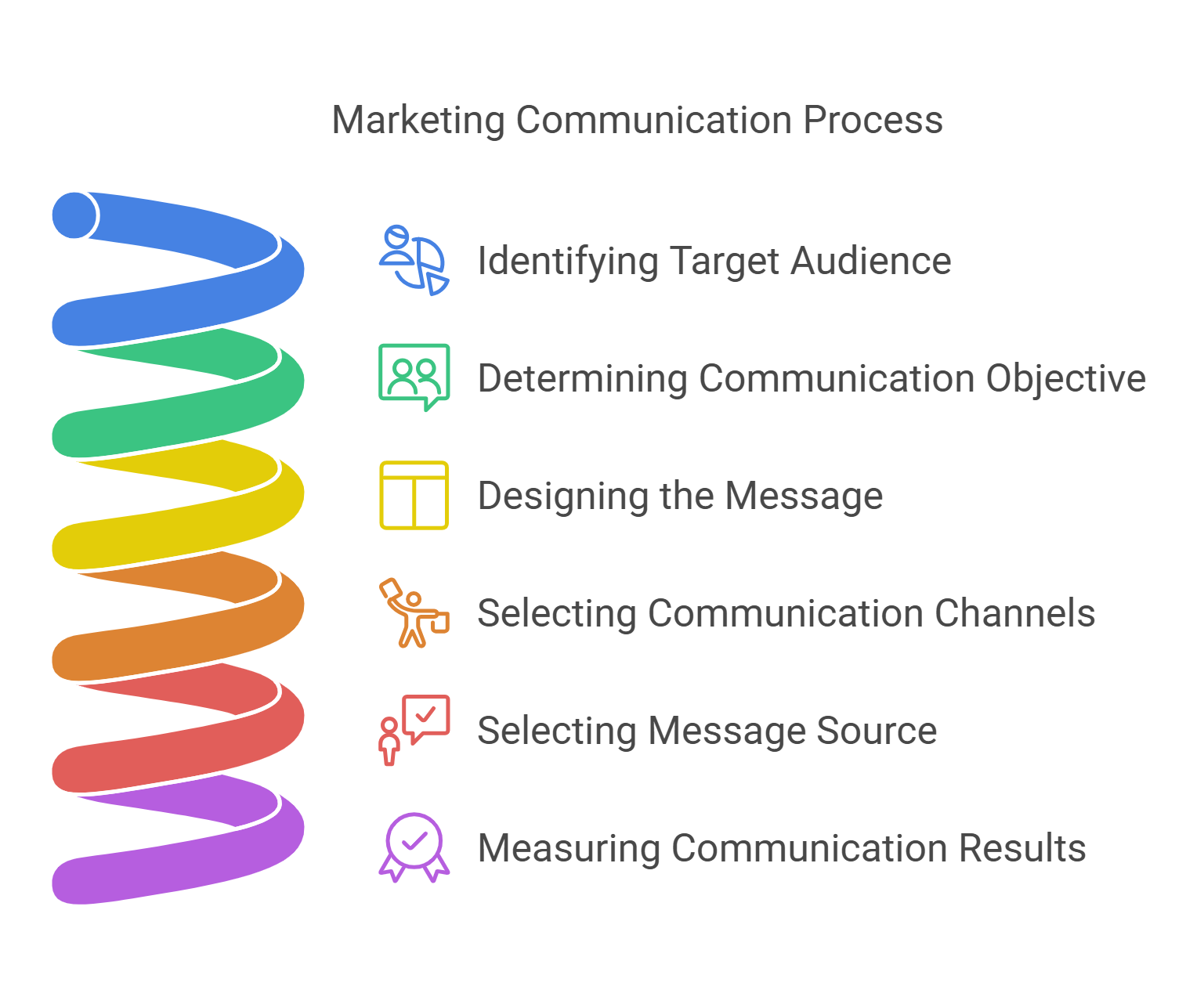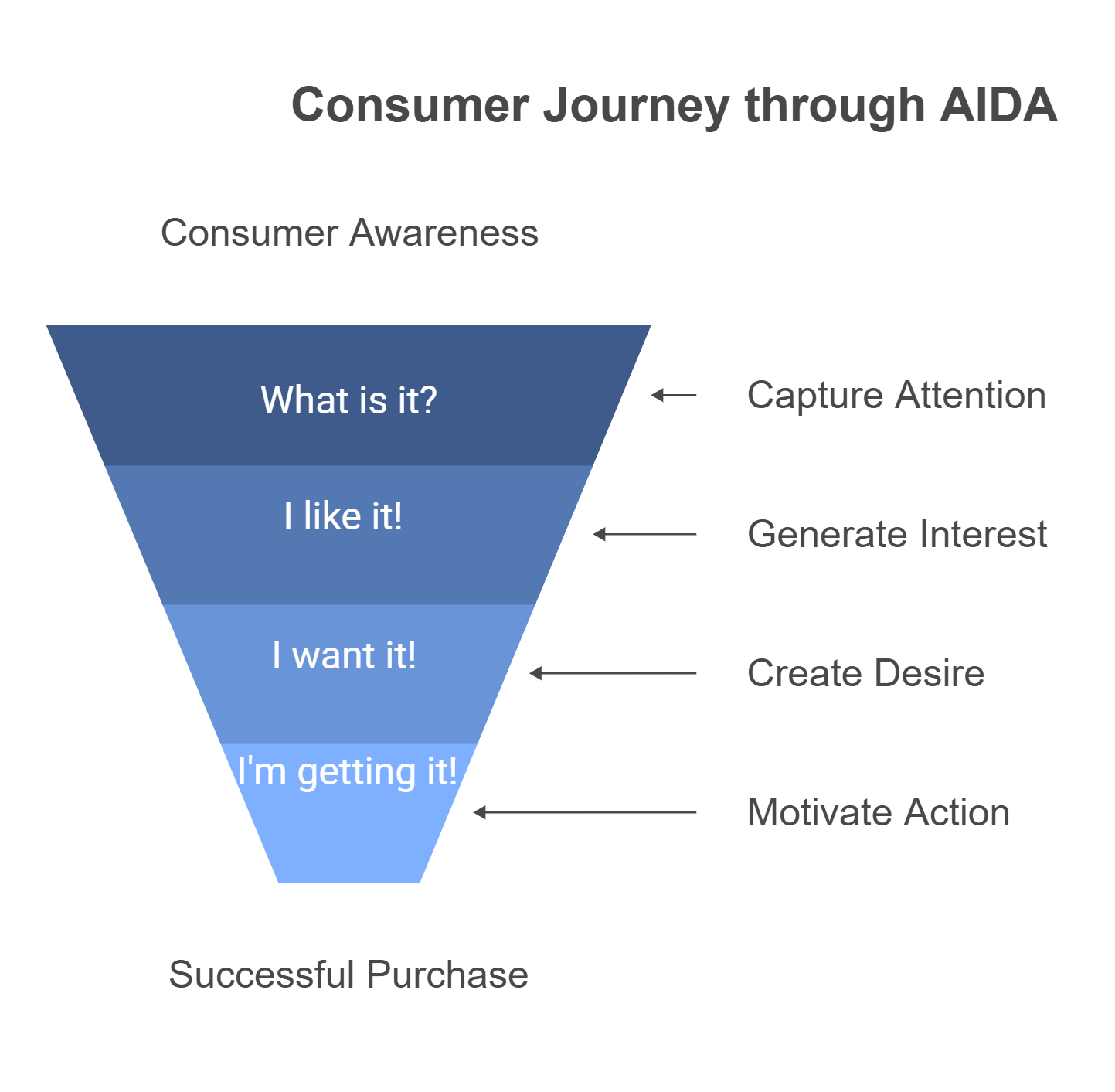Communicating the Journey: Promotion and Integrated Marketing Communication (IMC)
Promotion and Integrated Marketing Communication
Promotion and integrated marketing communication[1] play important roles in the marketing process, enabling organizations to effectively communicate their value proposition to target audiences. This chapter explores how organizations create coherent and coordinated messages across various touchpoints.

Promotion, a key element of the marketing mix, encompasses all activities that communicate a product or service to the target market. Integrated marketing communication (IMC) takes this concept further by unifying all marketing communications tools, corporate messages, and brand messages to deliver a consistent and persuasive message to the target audience.
Marketing Communications Definition
Marketing communications refer to the messages, media, and activities used by an organization to communicate with the market and persuade target audiences to accept its messages and take action accordingly. This includes communication via any or all marketing mix elements (the 4 Ps: product, price, place, and promotion).
Purpose of IMC
The primary goal of IMC is to create a seamless and coordinated message for prospective customers (i.e., message consistency). This approach ensures that all communication efforts work together harmoniously to reinforce the brand message and drive desired consumer actions.
The Touch Point Wheel: A Comprehensive View of Customer Interactions
The touch point wheel[2] is a powerful visual tool that helps visualize how IMC strategies revolve around various customer touchpoints throughout their journey with a brand. This wheel represents the array of contact points between a brand and its potential or existing customers, offering opportunities for meaningful communication, interaction, and engagement.

Key Elements of the Touch Point Wheel
The touch point wheel is structured around three primary stages of the customer journey:
- Pre-purchase Touchpoints: These are interactions that occur before a customer makes a purchase decision.
- Examples in Tourism and Hospitality:
- Social media posts about a destination
- Travel blog reviews
- Online advertisements for hotels or resorts
- Examples in Tourism and Hospitality:
- Purchase Touchpoints: These are the points of contact during the actual transaction process.
- Examples in Hospitality:
- Booking a hotel room through a website
- Interacting with a travel agent
- Making a reservation at a restaurant
- Examples in Hospitality:
- Post-purchase Touchpoints: These interactions happen after the purchase and can significantly impact customer satisfaction and loyalty.
- Examples in Recreation and Services:
- Follow-up emails after a spa treatment
- Customer service interactions following a tour
- Loyalty program communications
- Examples in Recreation and Services:
Each of these touchpoints presents an opportunity to influence the customer’s perception and overall experience with the brand. By strategically managing these interactions, organizations can create a more cohesive and positive customer journey.
Importance in IMC
The touch point wheel emphasizes the need for consistency across all brand interactions. In the context of IMC, this tool helps marketers:
- Identify Opportunities: By mapping out all potential touchpoints, marketers can identify new opportunities for engagement and areas that may need improvement.
- Ensure Consistency: The wheel helps in visualizing how different marketing efforts connect, ensuring a consistent brand message across all touchpoints.
- Enhance Customer Experience: By understanding the full spectrum of interactions, businesses can work towards creating a seamless and positive experience at every stage of the customer journey.
The Communication Process
In the context of marketing communications, the communication process provides a structured approach to reaching and engaging target audiences, ensuring that marketing messages are delivered effectively and achieve desired outcomes[3].

The communication process in marketing involves six key steps:
- Identifying the Target Audience: Involves understanding who the message is intended for, including their demographics, psychographics, and behaviours.
- Example: A luxury resort might target affluent travelers aged 40-65 seeking exclusive experiences.
- Determining the Communication Objective: Involves deciding what response is sought from the audience. Objectives might include building brand awareness, changing attitudes, or prompting a booking.
- Example: A new eco-tourism destination might focus on educating potential visitors about its unique sustainability practices.
- Designing the Message: Involves crafting the content, structure, and format of the message to effectively reach the target audience.
- Example: A family-friendly theme park might use vibrant imagery and playful language to appeal to parents and children alike.
- Selecting the Communication Channels: Involves choosing the most appropriate media to deliver the message, such as social media, travel blogs, or in-flight magazines.
- Example: A boutique hotel chain might prioritize Instagram and travel influencer partnerships to showcase its unique properties.
- Selecting the Message Source: Involves deciding who will deliver the message, which could be a celebrity endorser, travel expert, or satisfied guest.
- Example: An adventure tourism company might choose a renowned explorer to lend credibility and excitement to their expedition offerings.
- Measuring the Communication Results: Involves assessing the effectiveness of the communication effort through various metrics and feedback mechanisms. This could include tracking changes in booking rates, engagement on social media platforms, or guest satisfaction scores.
The AIDA Model
When determining communication objectives, marketers often use the AIDA model[4]. This model outlines the stages a consumer goes through in the purchasing process.
| Stages | Example: Luxury Hotel |
|---|---|
| A — Attention: Capturing the consumer’s notice. | Use stunning visuals of the hotel’s unique architecture on social media. |
| I — Interest: Generating curiosity about the product or service. | Highlight exclusive amenities and personalized services in targeted ads. |
| D — Desire: Creating a want for the product or service. | Showcase guest experiences and testimonials through influencer partnerships. |
| A — Action: Motivating the consumer to make a purchase. | Offer a limited-time discount for bookings made within a specific period. |

Example
Campaign Objectives and AIDA Model Stages
| AIDA Model Stages | Typical Campaign Objectives |
|---|---|
| Awareness: Build awareness to motivate further action. |
|
| Interest: Generate interest by informing about benefits, shaping perceptions. |
|
| Desire: Create desire; move from “liking” to “wanting.” |
|
| Action: Take action toward purchasing. |
|
Media Attributions
- Figure 1: “Marketing Video Marketing Digital Marketing” by Ron_Hoekstra (2022), via Pixabay, is used under the Pixabay content license.
- Figure 2: “2 Touch Point Wheel” by Izzy Stangl (2016), via Wikimedia Commons, is used under a CC BY-SA 4.0 license.
- Figure 3: “The marketing communication process” [created using Napkin.ai] by the author is under a CC BY-NC-SA 4.0 license.
- Figure 4: “The AIDA model” [created using Napkin.ai] by the author is under a CC BY-NC-SA 4.0 license.
- Kitchen, P. J., & Burgmann, I. (2010). Integrated marketing communication. Wiley International Encyclopedia of Marketing. https://doi.org/10.1002/9781444316568.wiem04001 ↵
- Dunn, M. and Davis, S. M. (2003). Building brands from the inside. Marketing Management, 12(3), 32–37. ↵
- Kotler, P., & Keller, K. L. (2021). Framework for marketing management (6th ed.). Pearson. ↵
- Wijaya, B. S. (2012). The development of hierarchy of effects model in advertising. International Research Journal of Business Studies, 5(1), 73–85. https://www.researchgate.net/profile/Bambang_Sukma_Wijaya/publication/230757483_The_Development_of_Hierarchy_of_Effects_Model_in_Advertising/links/5690fdb408aed0aed8146941/The-Development-of-Hierarchy-of-Effects-Model-in-Advertising.pdf ↵
A strategic approach that unifies all marketing communication tools and channels to deliver a consistent and persuasive message to the target audience.
Ensuring that all communication efforts align with brand values and deliver a unified message across all channels.
A visual tool illustrating customer interactions across three stages: pre-purchase (e.g., social media), purchase (e.g., booking systems), and post-purchase (e.g., loyalty programs).
Customer interactions before making a purchase decision. Examples include social media posts, online reviews, and advertisements.
Interactions that occur after a customer has made a purchase. Examples include follow-up emails, customer service interactions, and loyalty program communications.
The structured approach to delivering marketing messages effectively. It includes identifying the target audience, setting objectives, designing the message, selecting channels and sources, and measuring results.
The mediums used to deliver marketing messages to target audiences, including social media, email, television, print media, and in-person events.
A framework outlining the stages a consumer goes through in the purchasing process: Attention, Interest, Desire, and Action.

